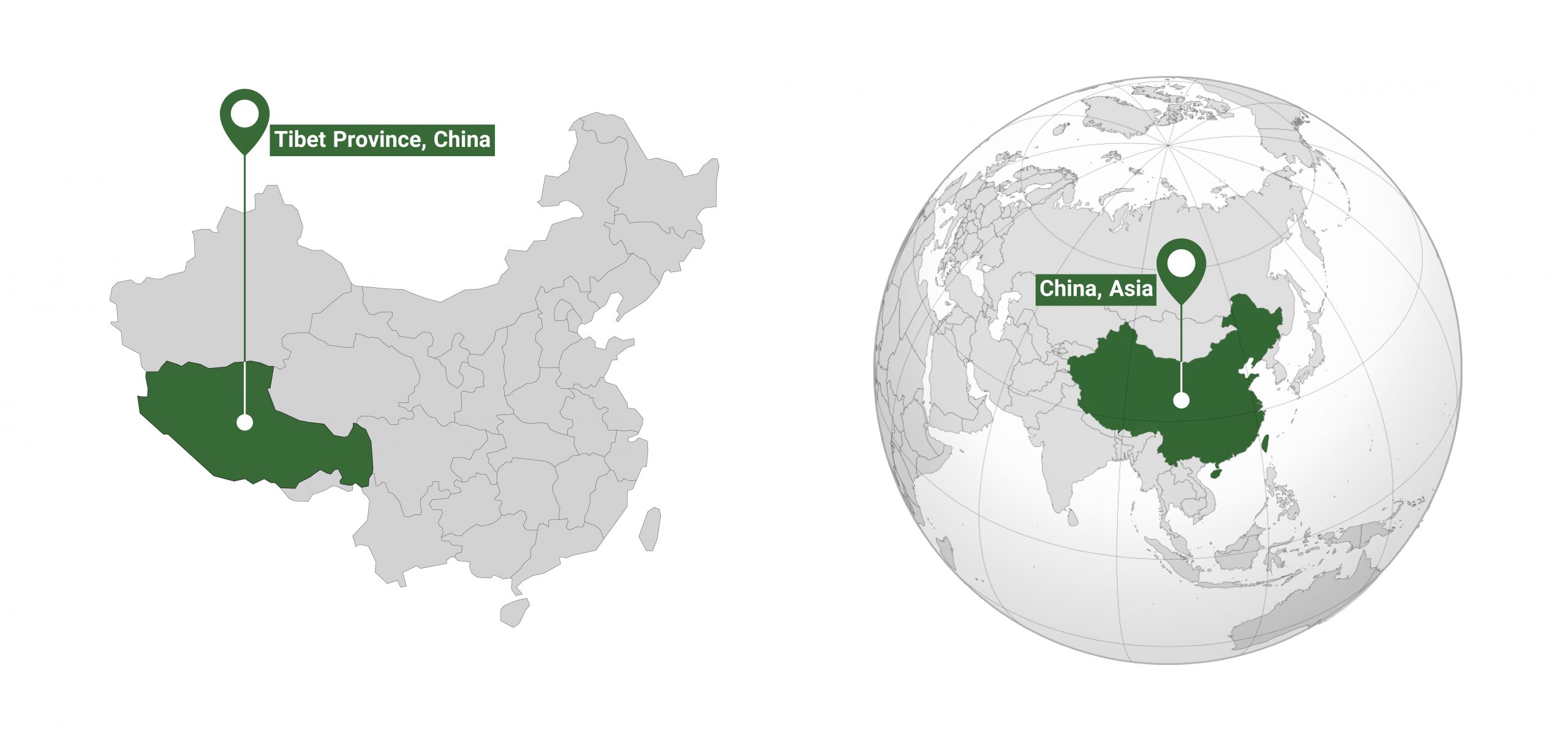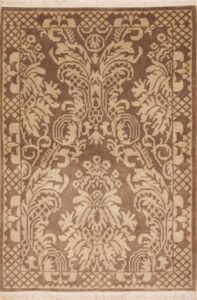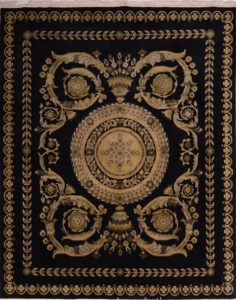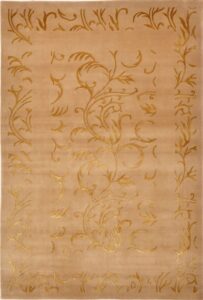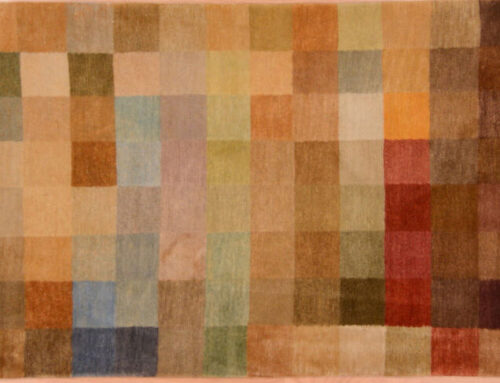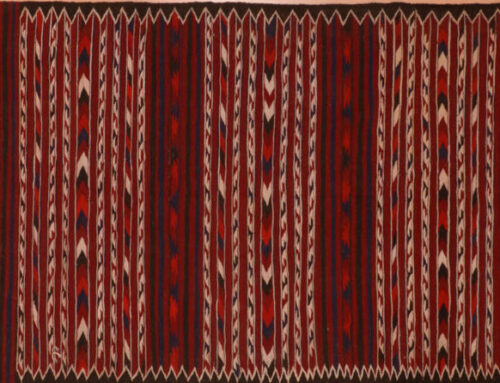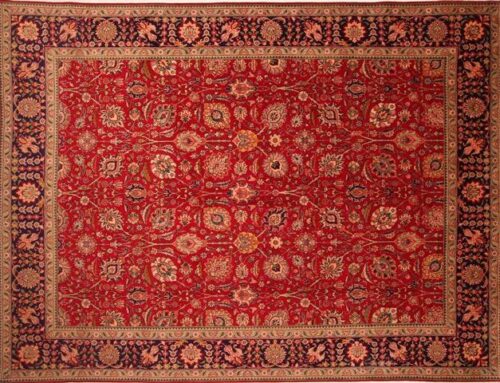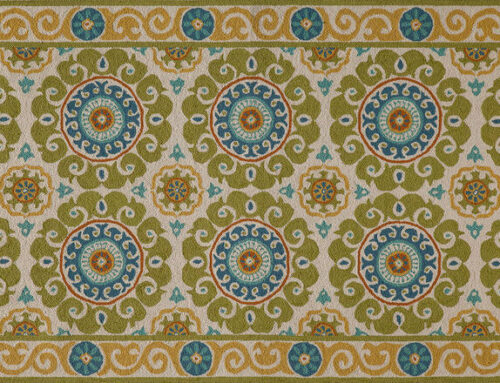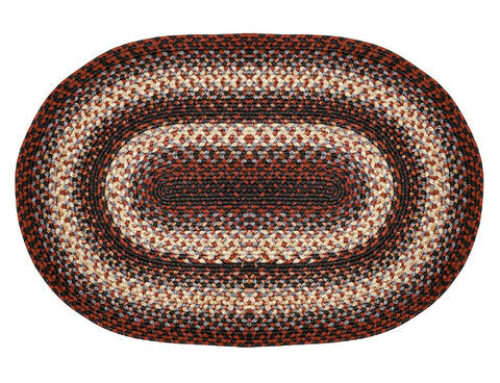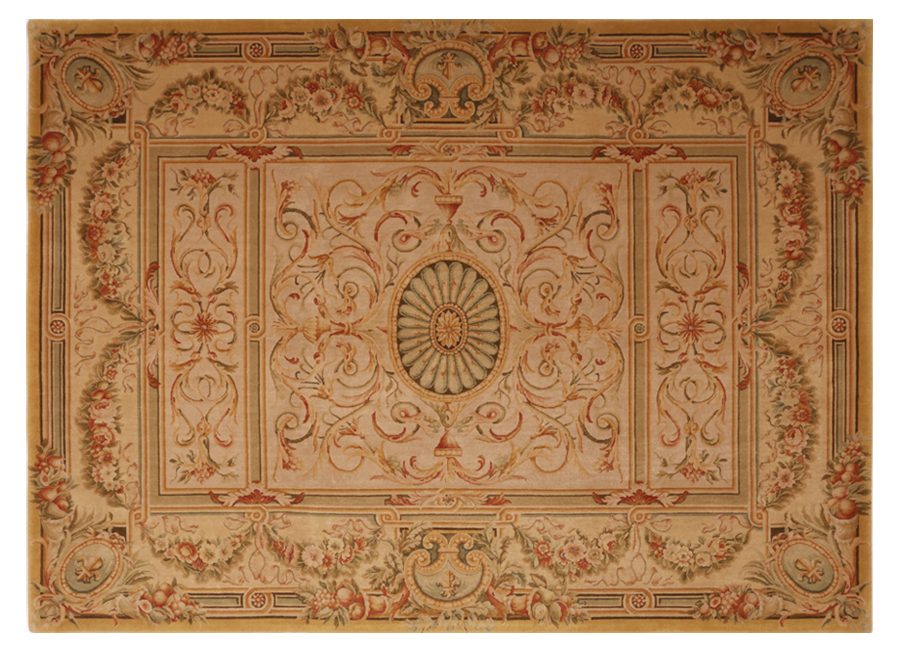
Origin of Tibetan Rugs 1
Tibet is a region located in the People’s Republic of China in East Asia. Tibet has the highest average elevation on Earth with the Himalaya Mountains located in the southern region bordering Nepal.
Early Tibetan rugs are in demand by collectors and can bring high prices in the antique market and at auction. Most early weavings are small items made for tribal daily use, such as bags, saddle covers, sleeping rugs (mattresses), and pillows. Weavers also made flatwoven Kilim rugs and blankets.
Today Tibetan rugs are made with decorative styles and lively coloration. Some rugs woven with natural-color wool are in demand by the design trade. Rugs are produced on a large scale and are mostly exported for the American market.
History of Tibetan Rugs
The Tibetan Empire was founded in the seventh century CE and lasted until the mid-ninth century. Over several centuries Tibetan tribes lived as semi-nomads, working in agriculture, raising livestock, and herding sheep. Tibet became a trading center for agricultural products from the neighboring provinces and countries. The Tibetan women are known for making handicrafts, silk products, and, most notably, garments, embroideries, and rugs.
Floor covering production in Tibet began in the thirteenth century with the making of Felt Carpets. This was a necessity for palaces and temples. Tibetan knotted pile rugs from the seventeenth century are known in the antique market.
Chinese pile rugs woven during the seventeenth century were made in the Tibetan areas of Kansu, Ningxia, and Suiyuan. Tibetan monks are credited with introducing and manufacturing rugs in Peking and other mainland Chinese cities in the nineteenth century.
Characteristics of Tibetan Rugs
-
Material and Knots
Tibetan rugs have cotton or wool foundations and a medium to long wool pile. The wool is high grade because of the Himalayan sheep and goat wool quality. The Persian (asymmetric) knot is prevalent, but also variations on it and loop techniques were used.
-
Color
Early Tibetan rug coloration features ivory, blues, reds, yellows, or browns. Some rugs were woven with natural-color wool.
-
Design and Pattern
Designs are mainly geometric, with Buddhist symbols and other decorative Far Eastern motifs. Field designs with the Dragon motif and animals, especially tigers and lions, were popular. Abstract tiger stripes were also employed for field patterns.

